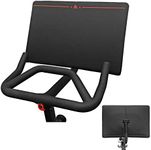Buying Guide for the Best Affordable Treadmills
Choosing the right treadmill can be a daunting task, especially with so many options available. The key is to understand your own needs and match them with the specifications of the treadmill. Whether you are a beginner or an experienced runner, knowing what to look for in a treadmill will help you make an informed decision. Here are some key specifications to consider when shopping for an affordable treadmill.Motor PowerThe motor power of a treadmill is measured in horsepower (HP) and determines how smoothly and efficiently the treadmill operates. For walking and light jogging, a motor with 2.0 to 2.5 HP is sufficient. For regular running, look for a motor with at least 3.0 HP. If you plan to use the treadmill for intense workouts or if multiple users will be using it, a more powerful motor will be necessary. Choose a motor power that matches your workout intensity and frequency.
Running SurfaceThe running surface, or belt size, is important for comfort and safety. A wider and longer belt provides more room to move and reduces the risk of tripping. For walking, a belt size of 18 inches wide and 50 inches long is adequate. For running, look for a belt that is at least 20 inches wide and 55 inches long. Taller users or those with a longer stride may need an even larger belt. Consider your height and stride length when choosing the running surface.
CushioningCushioning refers to the shock absorption system of the treadmill, which reduces the impact on your joints. Good cushioning is essential for preventing injuries and providing a comfortable workout experience. Treadmills with adjustable cushioning allow you to customize the level of shock absorption. If you have joint issues or plan to use the treadmill frequently, look for models with superior cushioning. Evaluate your need for joint protection and comfort when considering cushioning.
Incline OptionsIncline options allow you to simulate uphill running and add variety to your workouts. Most treadmills offer manual or automatic incline adjustments. A maximum incline of 10-15% is common and sufficient for most users. Incline training can help you burn more calories and target different muscle groups. If you want to challenge yourself and enhance your workouts, choose a treadmill with a good range of incline options. Think about how important incline training is to your fitness goals.
Speed RangeThe speed range of a treadmill determines how fast you can go. For walking, a maximum speed of 6 mph is sufficient. For jogging, look for a treadmill that goes up to 8 mph. For running, a maximum speed of 10-12 mph is ideal. Consider your current fitness level and how you plan to use the treadmill. If you are a beginner, you may not need a high-speed range, but if you are an experienced runner, a higher speed range will be beneficial. Match the speed range to your workout intensity.
FoldabilityFoldability is an important feature if you have limited space. Foldable treadmills can be easily stored away when not in use, making them ideal for small homes or apartments. Look for treadmills with a hydraulic folding system for easy and safe folding. If space is a concern, prioritize foldability in your decision. Assess your available space and storage needs when considering this feature.
Console FeaturesConsole features include the display and controls of the treadmill. Basic models offer simple displays showing speed, time, distance, and calories burned. More advanced models may include heart rate monitors, preset workout programs, and connectivity options like Bluetooth or app integration. Consider what features are important to you and how they will enhance your workout experience. If you enjoy tracking your progress and need motivation, look for treadmills with more advanced console features.
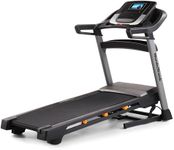
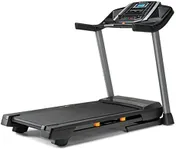
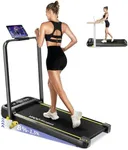
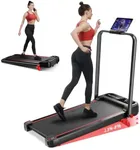
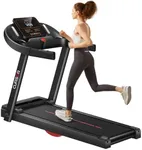
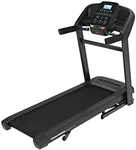

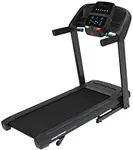


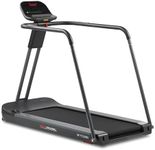

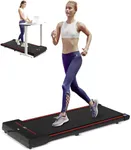
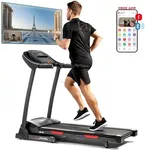
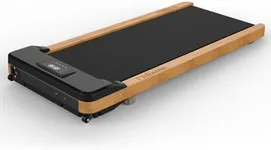
![SPORTY&FIT Folding Treadmill, [0.6-7.5 MPH] [265 LBS] for Running Walking, [Remote & Button Control] Space Saving Compact Treadmill for Apartment- Grey](https://images-proxy.bestreviews.guide/RWkmV2O0Rl8-VEWkWXINUW8wWRs=/0x150/https://m.media-amazon.com/images/I/416sPbMqfiL._AC_CX679_.jpg)
